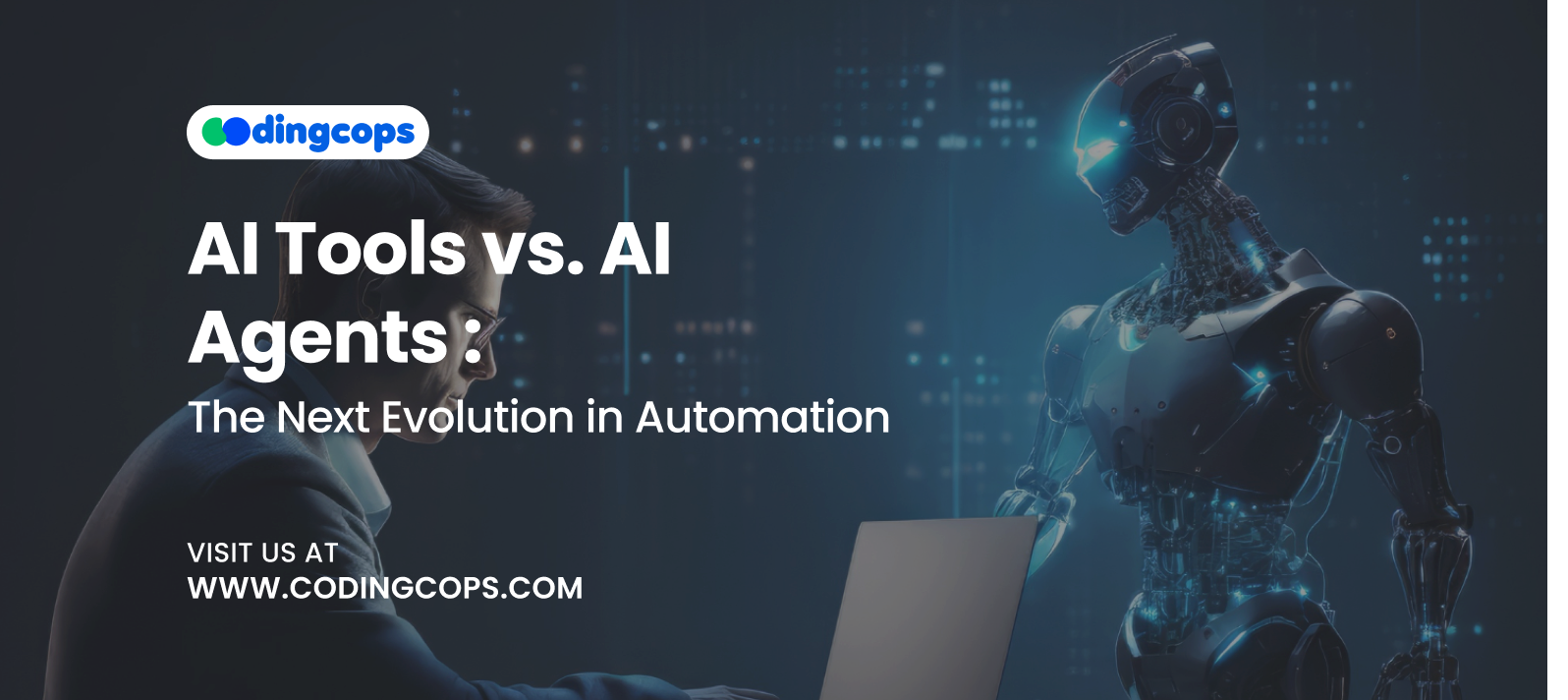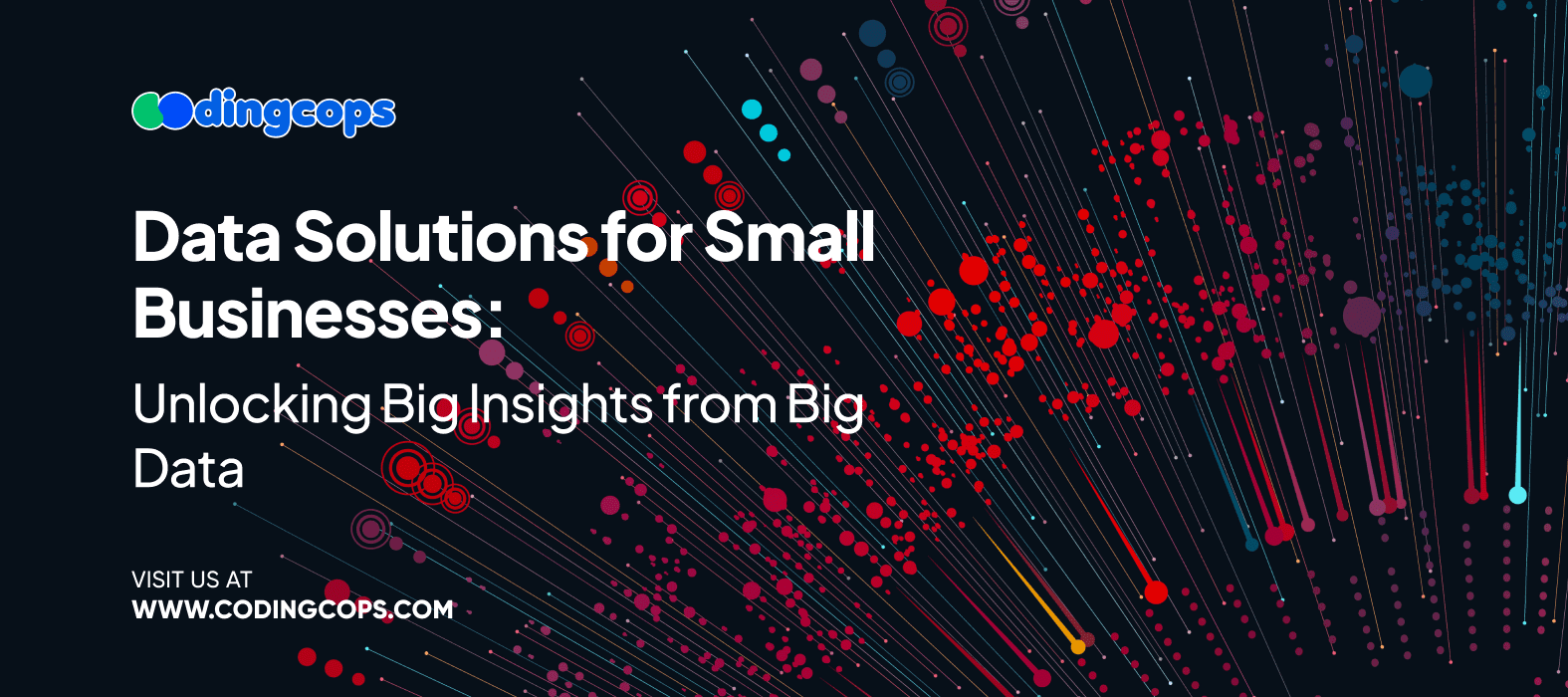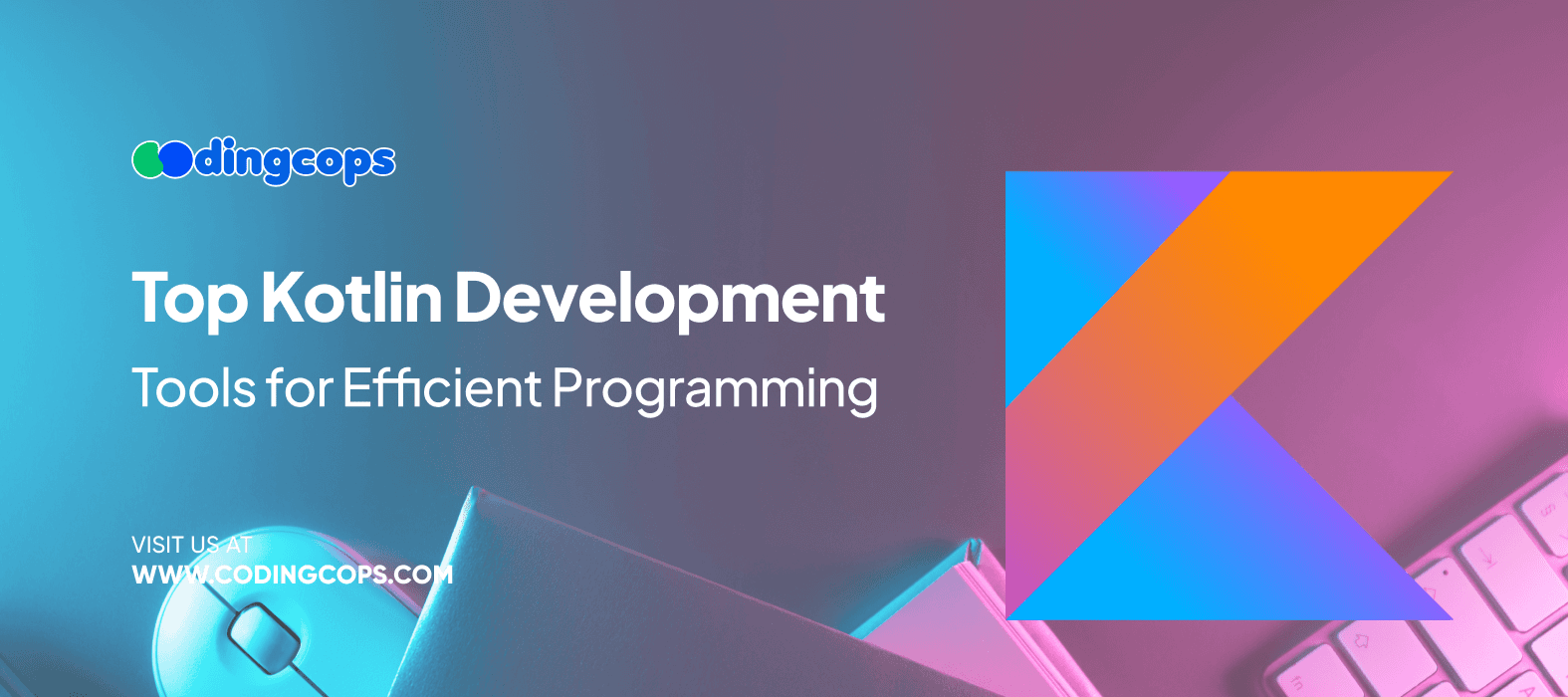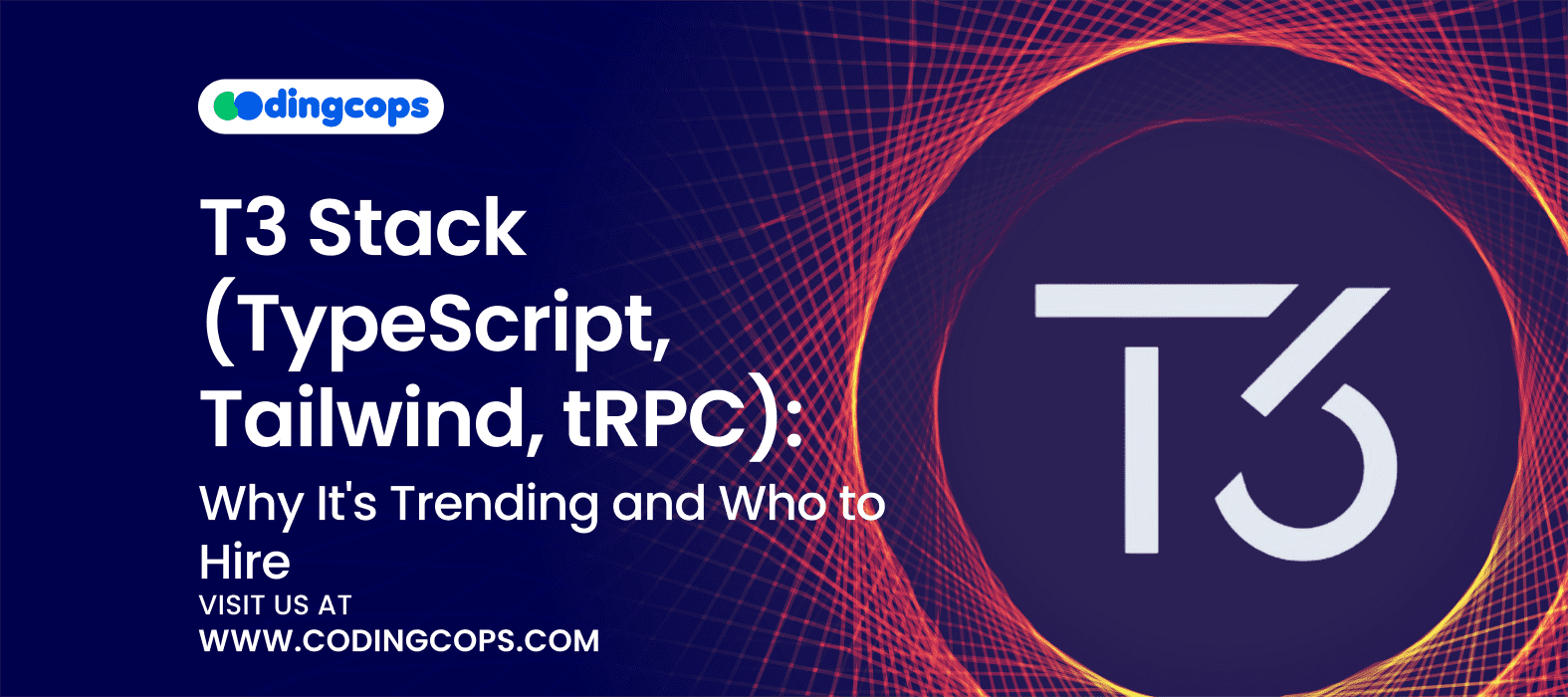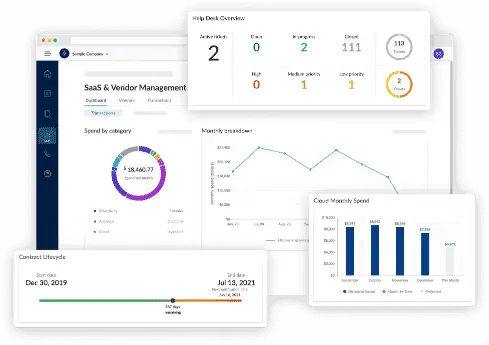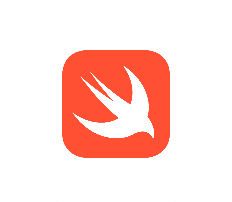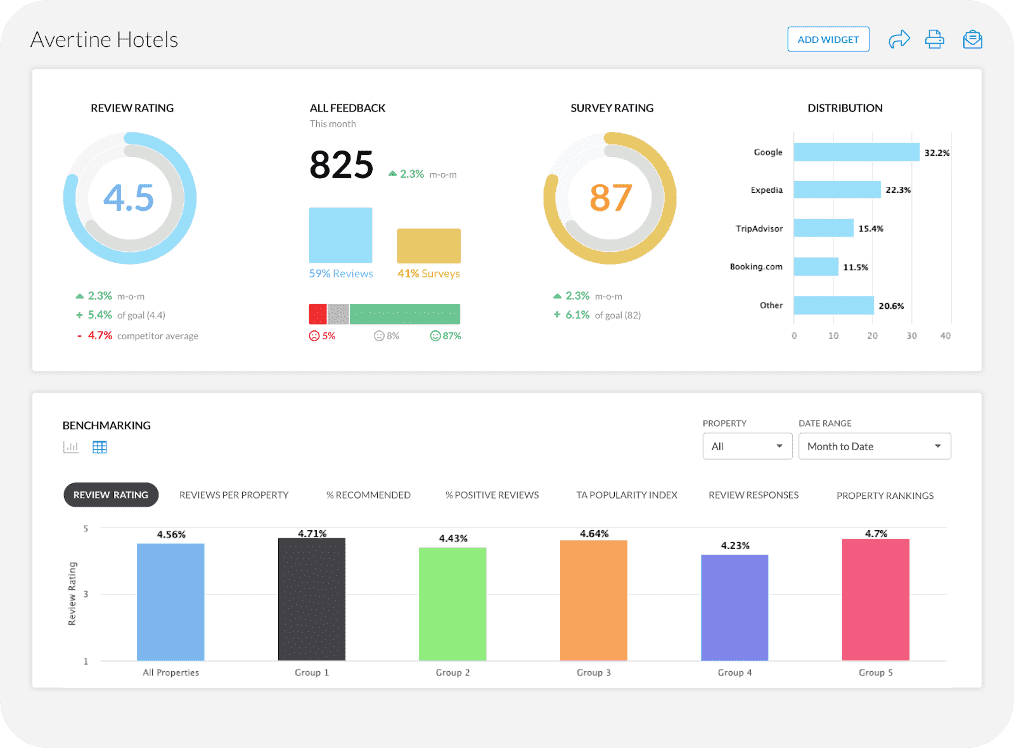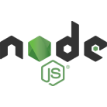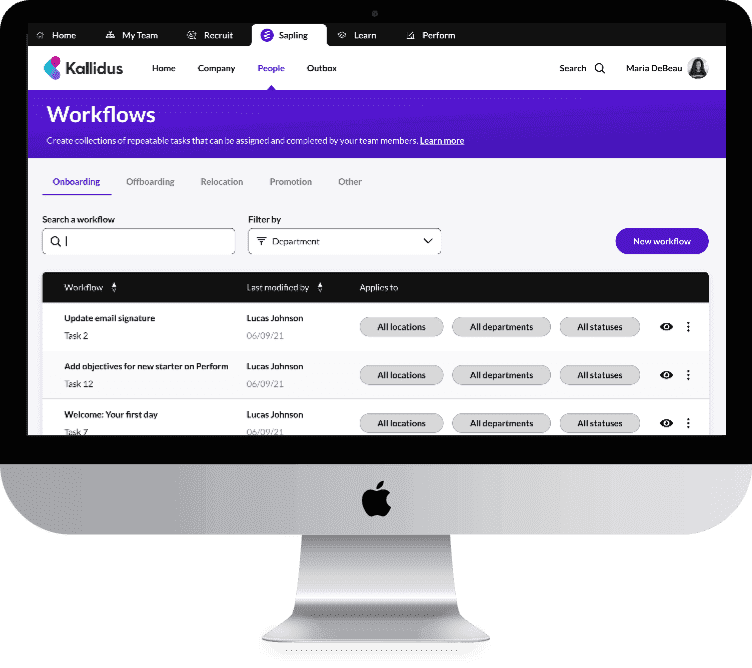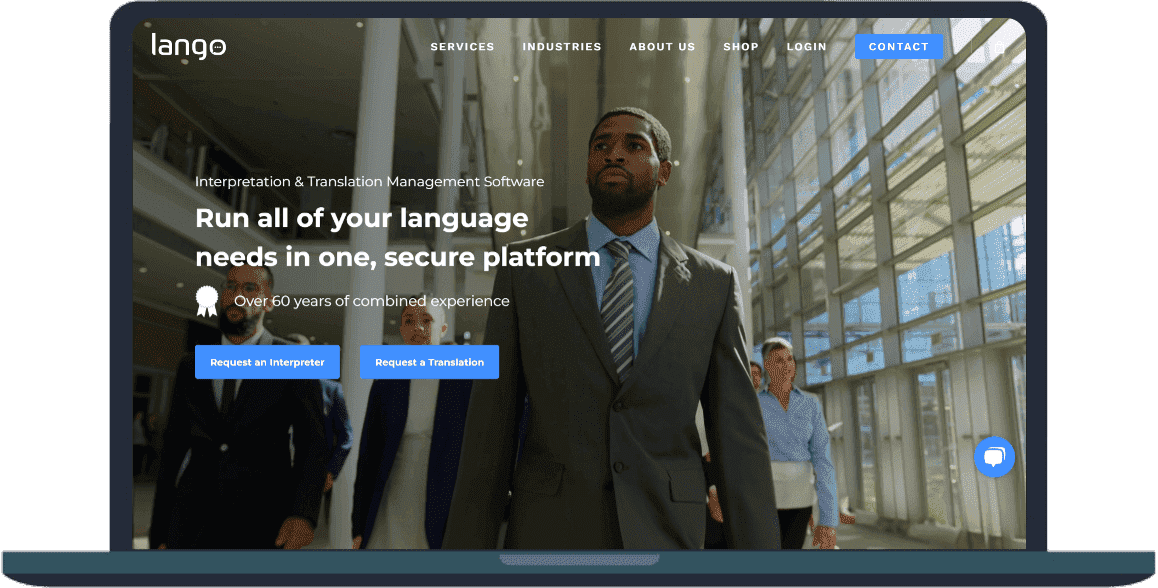According to TechJury, AI adoption rates have risen significantly since with over a 250% rise. Furthermore, the market for AI agents will reach $150 billion. This is a result of people using AI to boost productivity and corporations automating procedures.
But as AI technology advances, a new discussion about the distinction between AI tools and AI agents is starting to take shape. Despite the fact that they are both intended to simplify our lives, they function very differently.
We will explain each of these technologies and their potential uses in this guide.
What Are AI Tools?
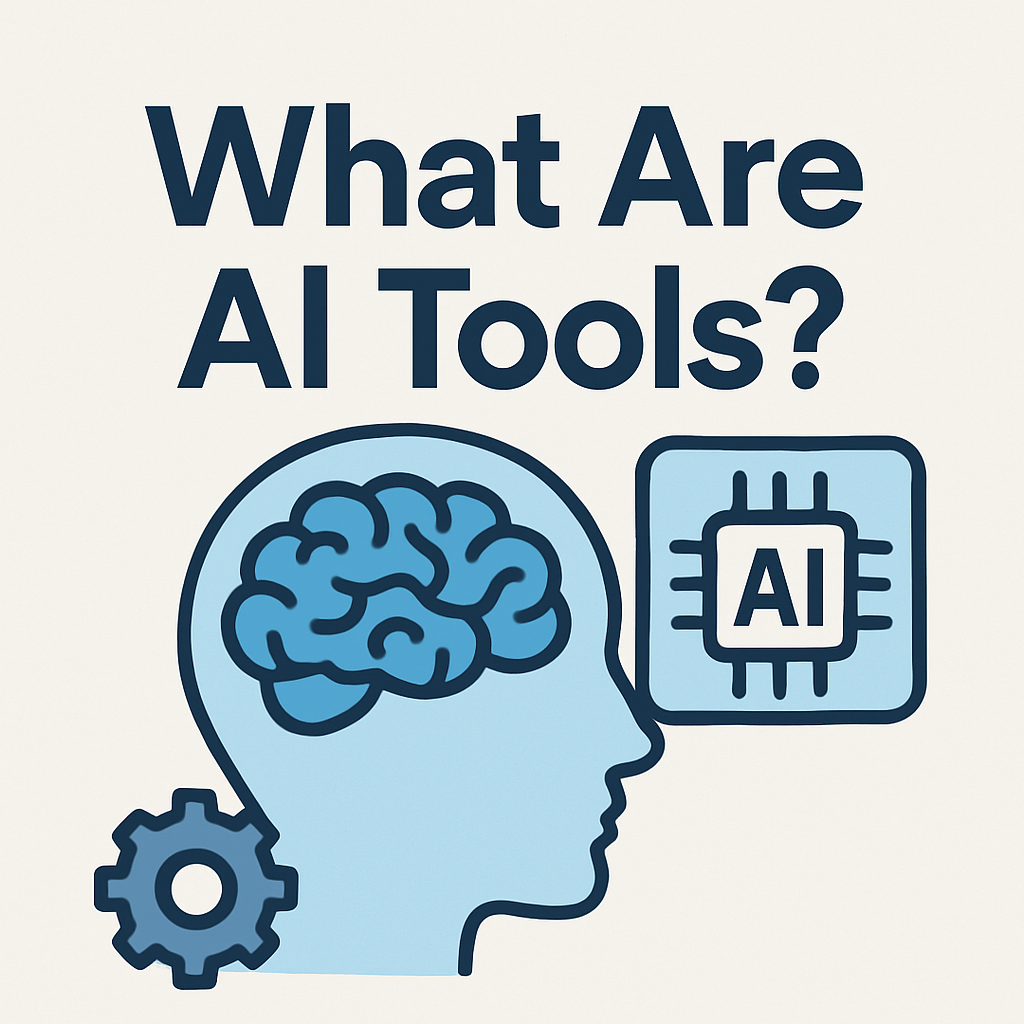
AI tools are platforms or software applications that use artificial intelligence algorithms to speed up certain tasks for consumers. They are also very skilled in their designated field, but because of their restricted concentration, they typically require human assistance to initiate and guide their activities.
You can think of AI tools as a powerful assistant; they don’t replace you entirely, but they can speed up or enhance the work you are doing. Also, they think within a defined framework: you provide input, the AI processes that input using its algorithms, and then returns an output.
Types of AI Tools
AI tools come in many forms, including:
- Text based tools: These tools are used for generating written content or summaries, like ChatGPT.
- Image generation tools: Such tools are used for creating digital art from prompts. For example, DALL-E.
- Data analytics tools: These tools are used for trend forecasting with AI driven insights.
- Audio & Video tools: These tools can help users in video editing and voice cloning.
What Are AI Agents?
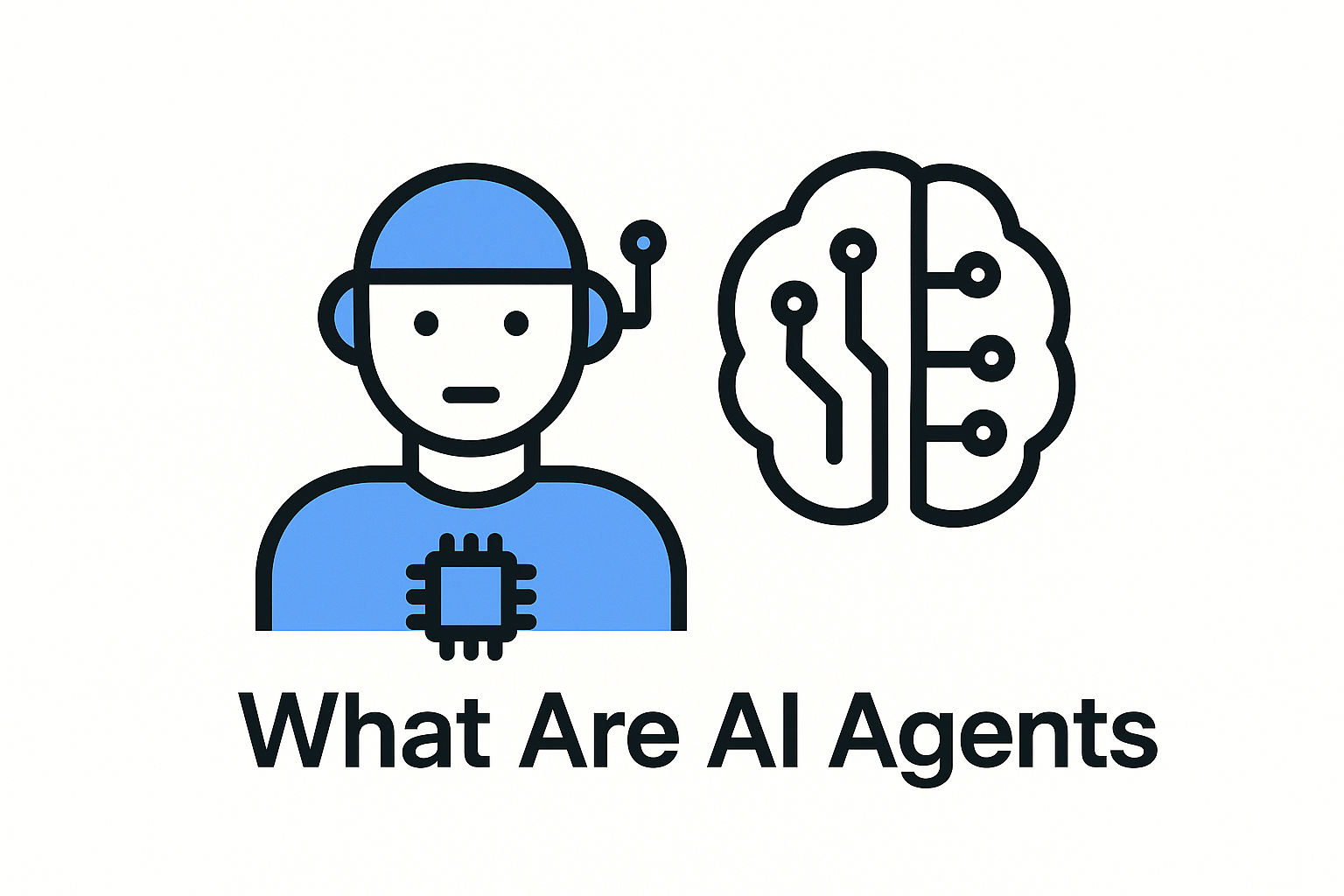
AI agents are self governing systems that can sense their surroundings and act to accomplish predetermined objectives, frequently without continual human oversight. AI agents may function freely and obey instructions at the goal level rather than the task level, in contrast to AI tools that need explicit cues for each task.
Furthermore, you can think of an AI agent as a self driven employee who doesn’t just wait for you to hand them work but proactively plans and executes. You give the agent a broad objective, and it will figure out the steps needed to make that happen.
How AI Agents Work?
An AI agent’s architecture usually consists of four main parts:
- Perception: Collecting information from its surroundings. This might entail examining real time system inputs or browsing webpages.
- Decision Making: Weighing possibilities and selecting the most effective strategy to achieve the objective.
- Action: Executing tasks, such as sending emails or launching applications.
- Learning: Use prior experiences and feedback to gradually enhance performance, frequently via iterative optimization or reinforcement learning.
Pros and Cons of AI Tools
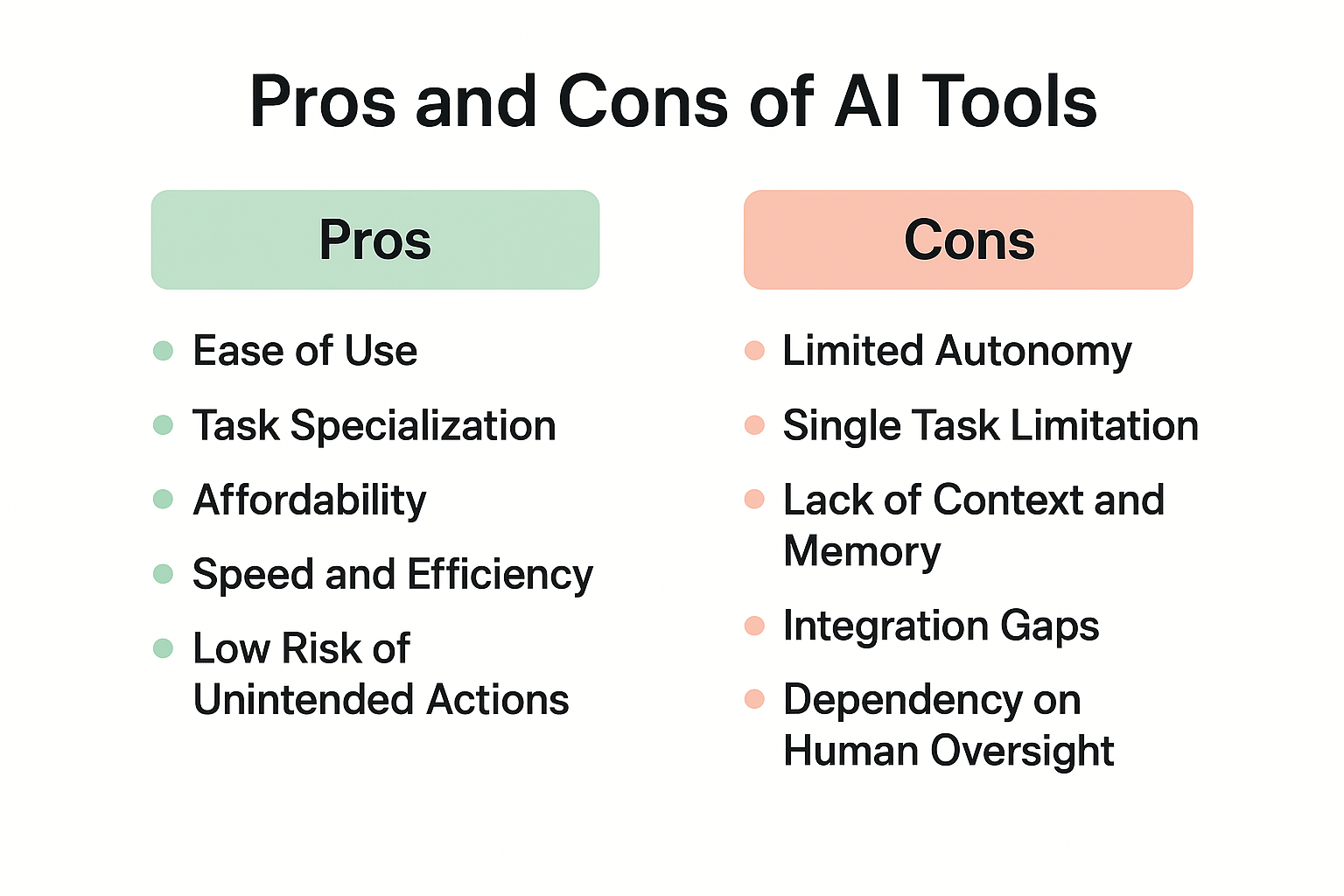
Pros
Ease of Use
Most of the AI tools are built with user friendly interfaces and require little to no technical expertise. So, you don’t need to be a machine learning engineer to use Grammarly for proofreading. Therefore, this simplicity means you can integrate them into your daily workflow almost instantly.
Task Specialization
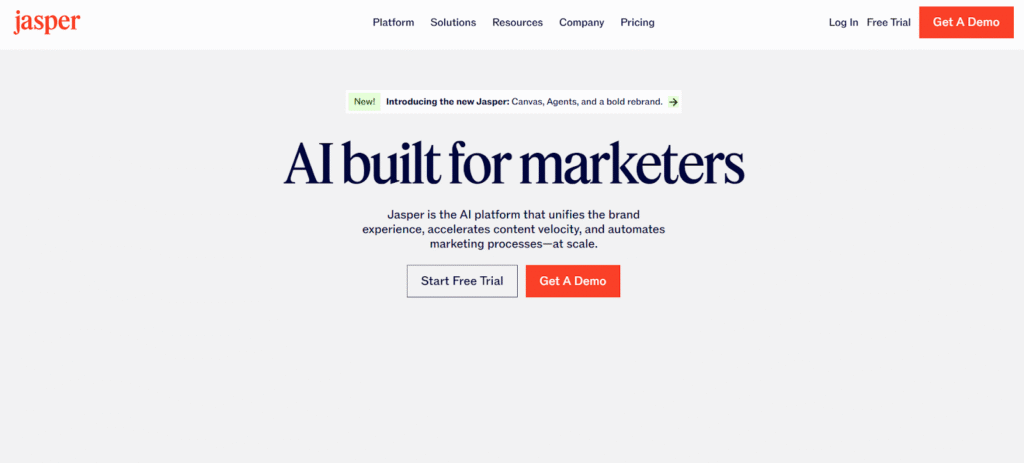
AI tools excel at specific, well defined functions. For instance, Descript is designed for video editing, but Jasper AI can produce superior marketing copy. This specialization allows them to deliver high quality and often outperform human effort in terms of speed.
Affordability
Many AI tools are available for free or at low subscription costs. Cloud infrastructure means they are accessible from anywhere with an internet connection, removing the barrier of expensive infrastructure.
Speed and Efficiency
Tasks that might take hours manually can be completed in seconds. For example, a market researcher can use an AI powered analytics tool to summarize months of sales data almost instantly.
Low Risk of Unintended Actions
The danger of AI tools acting unexpectedly is low since each job requires intentional input. They are therefore safer for novices and in circumstances when human supervision is essential.
Cons
Limited Autonomy
AI tools can’t take initiative, they need constant prompting or data input to perform their function. So, if you forget to ask, nothing gets done.
Single Task Limitation
While they are great at their designated jobs, AI tools aren’t built for multi step workflows. A writing assistant won’t conduct research for you unless you manually feed it the data.
Lack of Context and Memory
AI tools operate within a single interaction and have limited memory of past sessions. This means they may not understand your ongoing projects without re entering the same context repeatedly.
Integration Gaps
Some AI tools function in isolation and don’t seamlessly connect with your other systems or software. For example, a design AI might not automatically export files into your project management platform.
Dependency on Human Oversight
Because AI tools are not autonomous, they require you to review and approve every output. This can be time consuming for large scale or repetitive tasks.
Pros and Cons of AI Agents
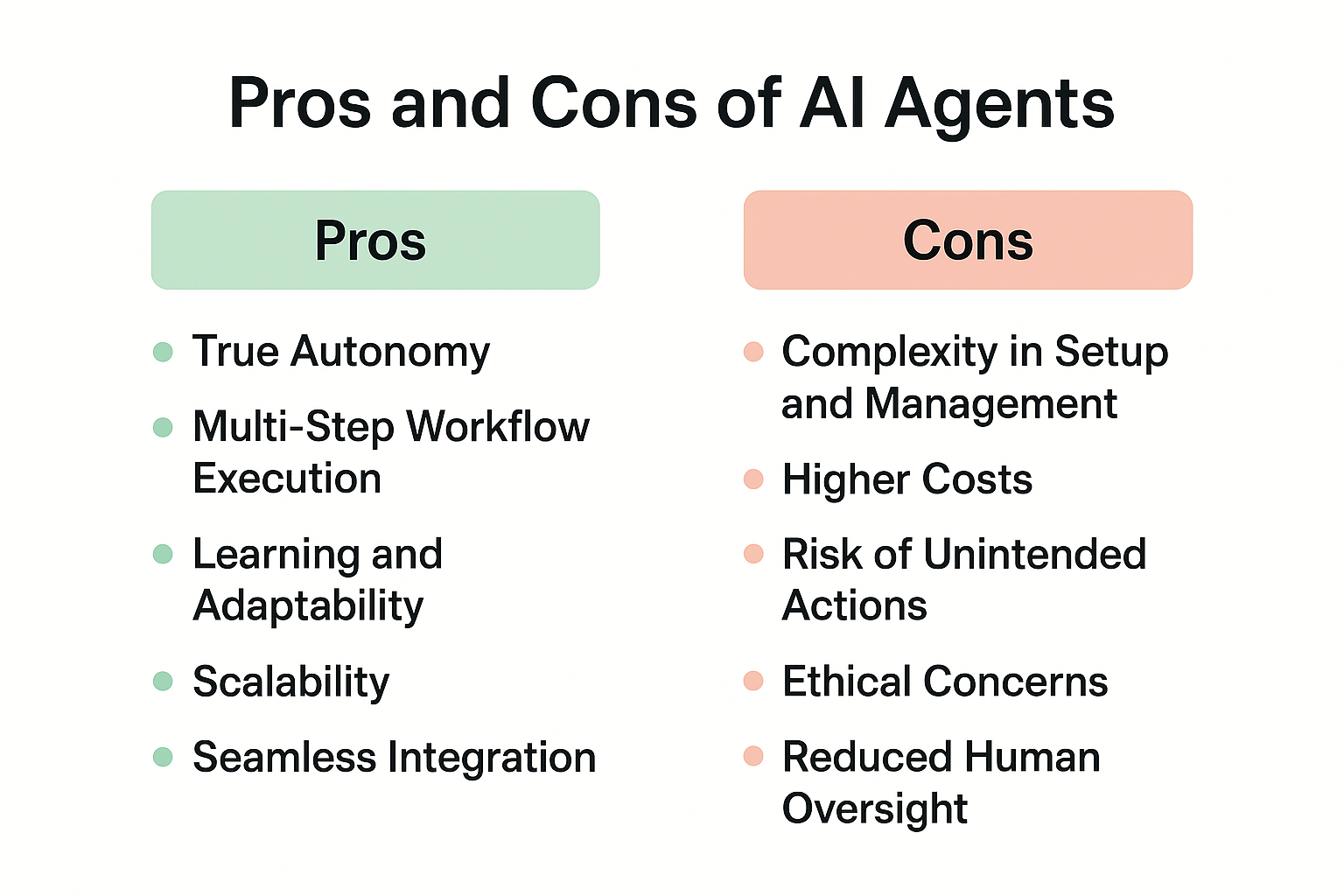
Pros
True Autonomy
AI agents can take a high level goal and figure out how to achieve it without micromanagement. For example, an AI agent may investigate industry trends and make strategy recommendations if you ask it to create a marketing campaign for the upcoming quarter. Moreover, it can draft content schedules and even coordinate with publishing tools, all without further input.
Multi Step Workflow Execution
While AI tools perform single tasks, agents can chain multiple actions together. An AI agent handling recruitment could source candidate profiles and filter them based on requirements. Also, you can send interview invites and compile candidate evaluations.
Learning and Adaptability
Many AI agents improve over time using machine learning and feedback loops. For instance, a customer care AI assistant may become more proficient with each contact by modifying its tone and solutions in response to client satisfaction data.
Scalability
AI agents can operate across multiple tasks and projects. In a business environment, this means one agent could manage hundreds of customer requests or system checks at once, far beyond human capacity.
Seamless Integration
Advanced AI agents are able to pull and push data across platforms by connecting to several databases and APIs. Additionally, this makes them perfect for overseeing interdependent processes like business resource planning or supply chain logistics.
Cons
Complexity in Setup and Management
AI agents often require technical expertise to configure and integrate. Setting up an agent to autonomously manage finances, for example, involves secure API connections and constant monitoring.
Higher Costs
Compared to more straightforward AI tools, autonomous AI systems often require more processing power and security precautions, which might raise operating expenses. Companies may also require specialized personnel to manage these agents.
Risk of Unintended Actions
AI agents may make choices that don’t match your expectations since they are autonomous. For instance, a procurement agent may put speed ahead of cost, which would result in needless spending.
Ethical Concerns
Inaccurate training data increases the likelihood of bias in the judgments made by AI bots. In the absence of adequate supervision, these agents can inadvertently break rules.
Reduced Human Oversight
Autonomy has advantages, but it also has drawbacks. Therefore, an AI agent could keep doing subpar activities in the absence of consistent monitoring and control systems. This magnifies mistakes before they are caught.
Differences Between AI Tools and AI Agents
| Criteria | AI Tools | AI Agents |
| Autonomy | Require explicit human input for each task. | Can act independently towards a set goal with minimal or no human intervention. |
| Scope of Work | Designed for single, specialized tasks. | Capable of managing complex, multi step workflows. |
| Decision Making | Execute pre defined instructions without evaluating alternatives. | Analyze situations, and choose the best course of action. |
| Learning Ability | May use limited machine learning within their domain, but generally static. | Continuously improve through learning from feedback and changing conditions. |
| Integration | Often work in isolation; limited connectivity with other systems. | Can integrate across multiple platforms, APIs, and databases for end to end automation. |
| Memory & Context | Usually process input without long term memory; limited context awareness. | Maintain and use memory to adapt actions based on past interactions and outcomes. |
| User Role | User directs each action and reviews outputs. | Users set goals, and the agent manages the process to completion. |
| Best For | Speeding up repetitive, well defined tasks where control and precision are critical. | Managing complex, dynamic operations that require adaptability and decision making. |
Use Cases of AI Tools and AI Agents
AI Tools
In many different industries, artificial intelligence technologies are widely employed to increase productivity and support decision making. Furthermore, because these tools are frequently developed with a specific goal in mind, they are ideal for concentrated issue solutions.
In medical imaging analysis, where algorithms analyze pictures with high accuracy to help discover early symptoms of diseases like cancer, artificial intelligence approaches are essential. AI driven risk assessment technologies assist banks in evaluating loan applications by examining market circumstances and credit ratings. Additionally, marketing organizations use AI approaches to segment and customize their customer base. This enables companies to create personalized campaigns that boost conversion rates.
AI technologies are also useful for industrial predictive maintenance. By analyzing machine sensor data, they can identify equipment issues before they arise. Also, they can reduce maintenance expenses. In education, AI powered grading systems and adaptive learning platforms boost instructor efficiency while personalizing each student’s educational journey.
AI Agents
AI agents continuously interact with their environment. They learn from all the new data and adapt their responses over time. As a result, they are appropriate for making decisions in complicated situations in real time and dynamically.
Virtual assistants and chatbots that can manage multi turn discussions and escalate complicated issues to human personnel as needed are powered by AI agents in customer service. Additionally, by modifying delivery routes in response to traffic or abrupt changes in demand, AI agents in logistics maximize real time supply chain management.
AI agents are also crucial in autonomous systems, such as self driving cars. They interpret surroundings and make safe navigation decisions instantly. AI agents in cybersecurity identify anomalous network activity and automatically implement countermeasures.
Intelligent scheduling agents, which are personal productivity helpers that learn user preferences over time and proactively recommend meeting schedules and priority modifications based on changes in workload, are another noteworthy use case.
Final Word
AI tools and AI agents each offer unique strengths, tools excel in task specific efficiency, while agents provide autonomous problem solving. So, choosing the right option depends on goals and scalability needs. Therefore, utilizing both strategically can maximize innovation and decision making capabilities.

